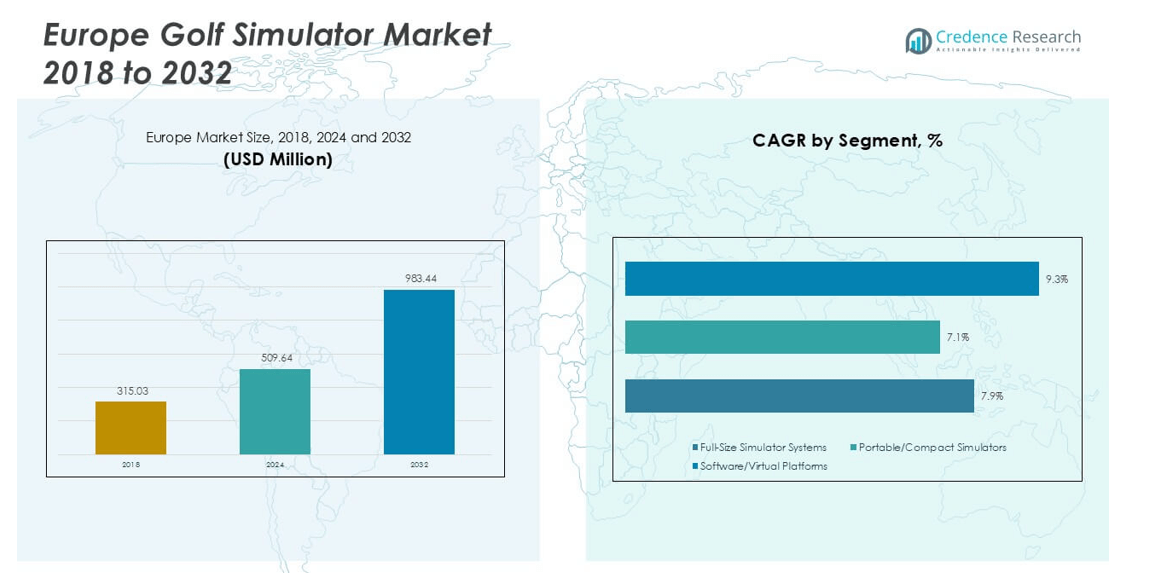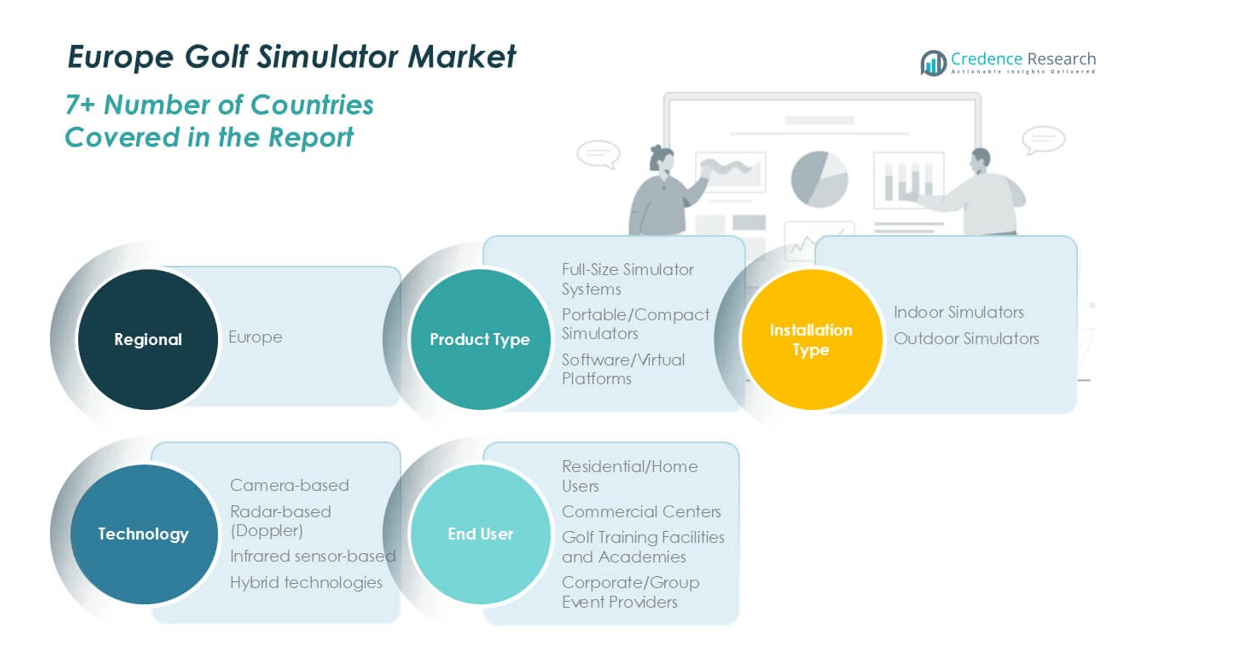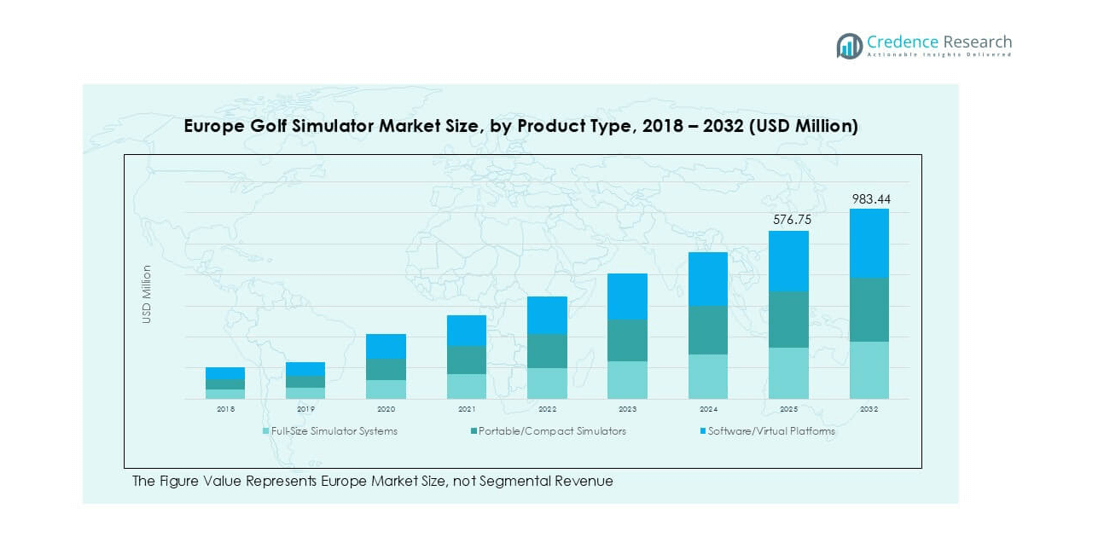CHAPTER NO. 1: GENESIS OF THE MARKET
1.1 Market Prelude – Introduction & Scope
1.2 The Big Picture – Objectives & Vision
1.3 Strategic Edge – Unique Value Proposition
1.4 Stakeholder Compass – Key Beneficiaries
CHAPTER NO. 2: EXECUTIVE LENS
2.1 Pulse of the Industry – Market Snapshot
2.2 Growth Arc – Revenue Projections (USD Million)
2.3. Premium Insights – Based on Primary Interviews
CHAPTER NO. 3: GOLF SIMULATOR MARKET FORCES & INDUSTRY PULSE
3.1 Foundations of Change – Market Overview
3.2 Catalysts of Expansion – Key Market Drivers
3.2.1 Momentum Boosters – Growth Triggers
3.2.2 Innovation Fuel – Disruptive Technologies
3.3 Headwinds & Crosswinds – Market Restraints
3.3.1 Regulatory Tides – Compliance Challenges
3.3.2 Economic Frictions – Inflationary Pressures
3.4 Untapped Horizons – Growth Potential & Opportunities
3.5 Strategic Navigation – Industry Frameworks
3.5.1 Market Equilibrium – Porter’s Five Forces
3.5.2 Ecosystem Dynamics – Value Chain Analysis
3.5.3 Macro Forces – PESTEL Breakdown
3.6 Price Trend Analysis
3.6.1 Regional Price Trend
3.6.2 Price Trend by Product
CHAPTER NO. 4: KEY INVESTMENT EPICENTER
4.1 Regional Goldmines – High-Growth Geographies
4.2 Product Frontiers – Lucrative Product Categories
4.3 Application Sweet Spots – Emerging Demand Segments
CHAPTER NO. 5: REVENUE TRAJECTORY & WEALTH MAPPING
5.1 Momentum Metrics – Forecast & Growth Curves
5.2 Regional Revenue Footprint – Market Share Insights
5.3 Segmental Wealth Flow – Product Type & Technology Revenue
CHAPTER NO. 6: TRADE & COMMERCE ANALYSIS
6.1. Import Analysis by Region
6.1.1. Europe Golf Simulator Market Import Volume By Region
6.2. Export Analysis by Region
6.2.1. Europe Golf Simulator Market Export Volume By Region
CHAPTER NO. 7: COMPETITION ANALYSIS
7.1. Company Market Share Analysis
7.1.1. Golf Simulator Market: Company Market Share
7.1. Europe Golf Simulator Market Company Volume Market Share
7.2. Europe Golf Simulator Market Company Revenue Market Share
7.3. Strategic Developments
7.3.1. Acquisitions & Mergers
7.3.2. New Product Launch
7.3.3. Regional Expansion
7.4. Competitive Dashboard
7.5. Company Assessment Metrics, 2024
CHAPTER NO. 8: GOLF SIMULATOR MARKET – BY PRODUCT TYPE SEGMENT ANALYSIS
8.1. Golf Simulator Market Overview by Product Type Segment
8.1.1. Golf Simulator Market Volume Share By Product Type
8.1.2. Golf Simulator Market Revenue Share By Product Type
8.2. Full-Size Simulator Systems
8.3. Portable/Compact Simulators
8.4. Software/Virtual Platforms
CHAPTER NO. 9: GOLF SIMULATOR MARKET – BY INSTALLATION TYPE SEGMENT ANALYSIS
9.1. Golf Simulator Market Overview by Installation Type Segment
9.1.1. Golf Simulator Market Volume Share By Installation Type
9.1.2. Golf Simulator Market Revenue Share By Installation Type
9.2. Indoor Simulators
9.3. Outdoor Simulators
CHAPTER NO. 10: GOLF SIMULATOR MARKET – BY TECHNOLOGY SEGMENT ANALYSIS
10.1. Golf Simulator Market Overview by Technology Segment
10.1.1. Golf Simulator Market Volume Share By Technology
10.1.2. Golf Simulator Market Revenue Share By Technology
10.2. Camera-based
10.3. Radar-based (Doppler)
10.4. Infrared sensor-based
10.5. Hybrid technologies
CHAPTER NO. 11: GOLF SIMULATOR MARKET – BY END USER SEGMENT ANALYSIS
11.1. Golf Simulator Market Overview by End User Segment
11.1.1. Golf Simulator Market Volume Share By End User
11.1.2. Golf Simulator Market Revenue Share By End User
11.2. Residential/Home Users
11.3. Commercial Centers
11.4. Golf Training Facilities and Academies
11.5. Corporate/Group Event Providers
CHAPTER NO. 12: GOLF SIMULATOR MARKET – REGIONAL ANALYSIS
12.1. Golf Simulator Market Overview by Region Segment
12.1.1. Europe Golf Simulator Market Volume Share By Region
12.1.2. Europe Golf Simulator Market Revenue Share By Region
12.1.3. Region
12.1.4. Europe Golf Simulator Market Volume By Region
12.1.5. Europe Golf Simulator Market Revenue By Region
12.1.6. Product Type
12.1.7. Europe Golf Simulator Market Volume By Product Type
12.1.8. Europe Golf Simulator Market Revenue By Product Type
12.1.9. Installation Type
12.1.10. Europe Golf Simulator Market Volume By Installation Type
12.1.11. Europe Golf Simulator Market Revenue By Installation Type
12.1.12. Technology
12.1.13. Europe Golf Simulator Market Volume By Technology
12.1.14. Europe Golf Simulator Market Revenue By Technology
12.1.12. End User
12.1.13. Europe Golf Simulator Market Volume By End User
12.1.14. Europe Golf Simulator Market Revenue By End User
CHAPTER NO. 13: EUROPE GOLF SIMULATOR MARKET – COUNTRY ANALYSIS
13.1. Europe Golf Simulator Market Overview by Country Segment
13.1.1. Europe Golf Simulator Market Volume Share By Country
13.1.2. Europe Golf Simulator Market Revenue Share By Country
13.2. Europe
13.2.1. Europe Golf Simulator Market Volume By Country
13.2.2. Europe Golf Simulator Market Revenue By Country
13.2.3. Product Type
13.2.4. Europe Golf Simulator Market Volume By Product Type
13.2.5. Europe Golf Simulator Market Revenue By Product Type
13.2.6. Installation Type
13.2.7. Europe Golf Simulator Market Volume By Installation Type
13.2.8. Europe Golf Simulator Market Revenue By Installation Type
13.2.9. Technology
13.2.10. Europe Golf Simulator Market Volume By Technology
13.2.11. Europe Golf Simulator Market Revenue By Technology
13.2.12. End User
13.2.13. Europe Golf Simulator Market Volume By End User
13.2.14. Europe Golf Simulator Market Revenue By End User
13.3. Germany
13.4. UK
13.5. France
13.6. Italy
13.7. Spain
13.8. Russia
13.9. Rest of Europe
CHAPTER NO. 14 : COMPANY PROFILES
14.1. G7th
14.1.1. Company Overview
14.1.2. Product Portfolio
14.1.3. Financial Overview
14.1.4. Recent Developments
14.1.5. Growth Strategy
14.1.6. SWOT Analysis
14.2. FZONE
14.3. Aroma Music
14.4. Glider
14.5. Gruv Gear
14.6. K&M
14.7. Dunlop
14.8. Stagg
14.9. Jim Dunlop
14.10. Thalia Capos
14.11. X-Golf America










